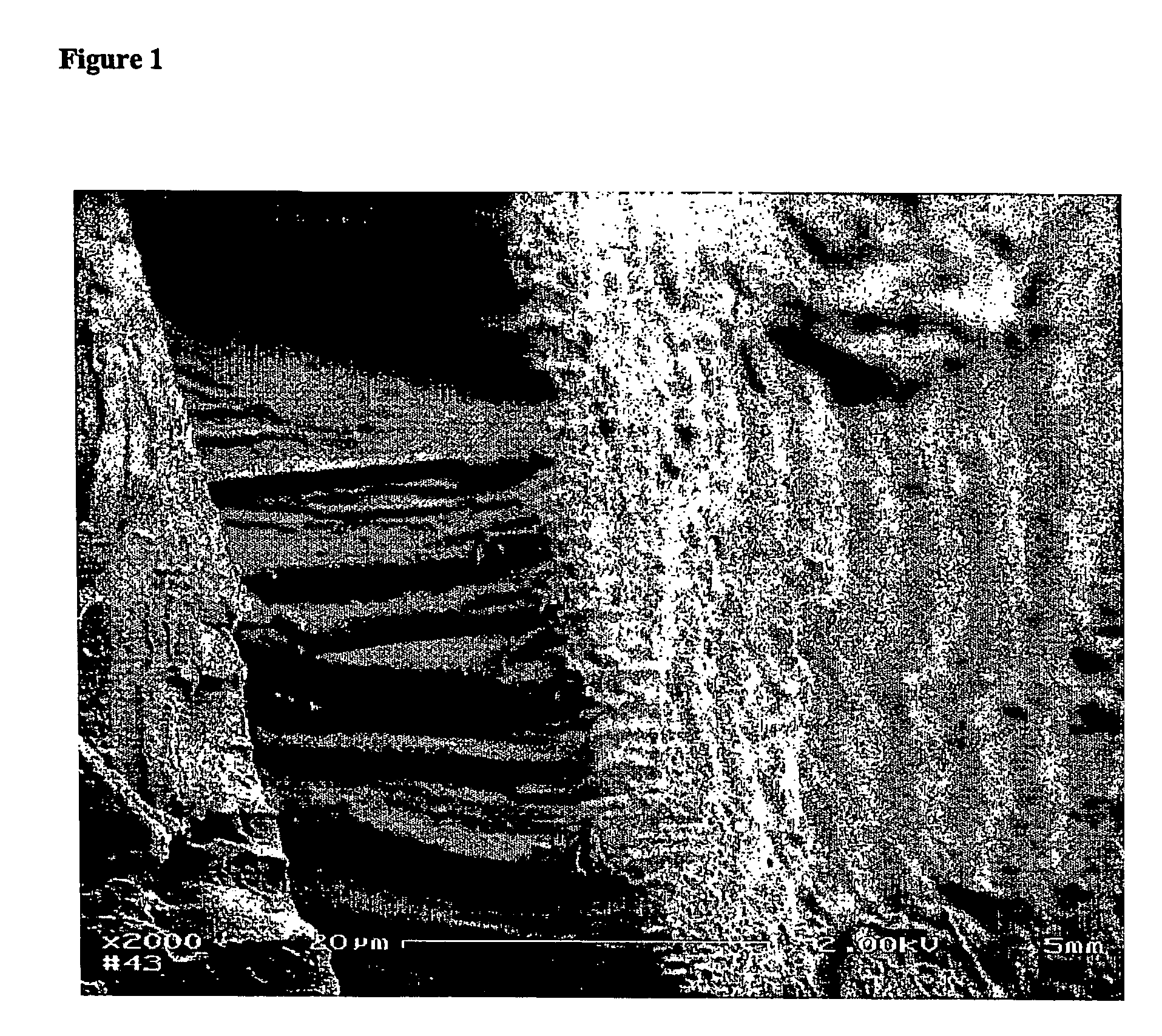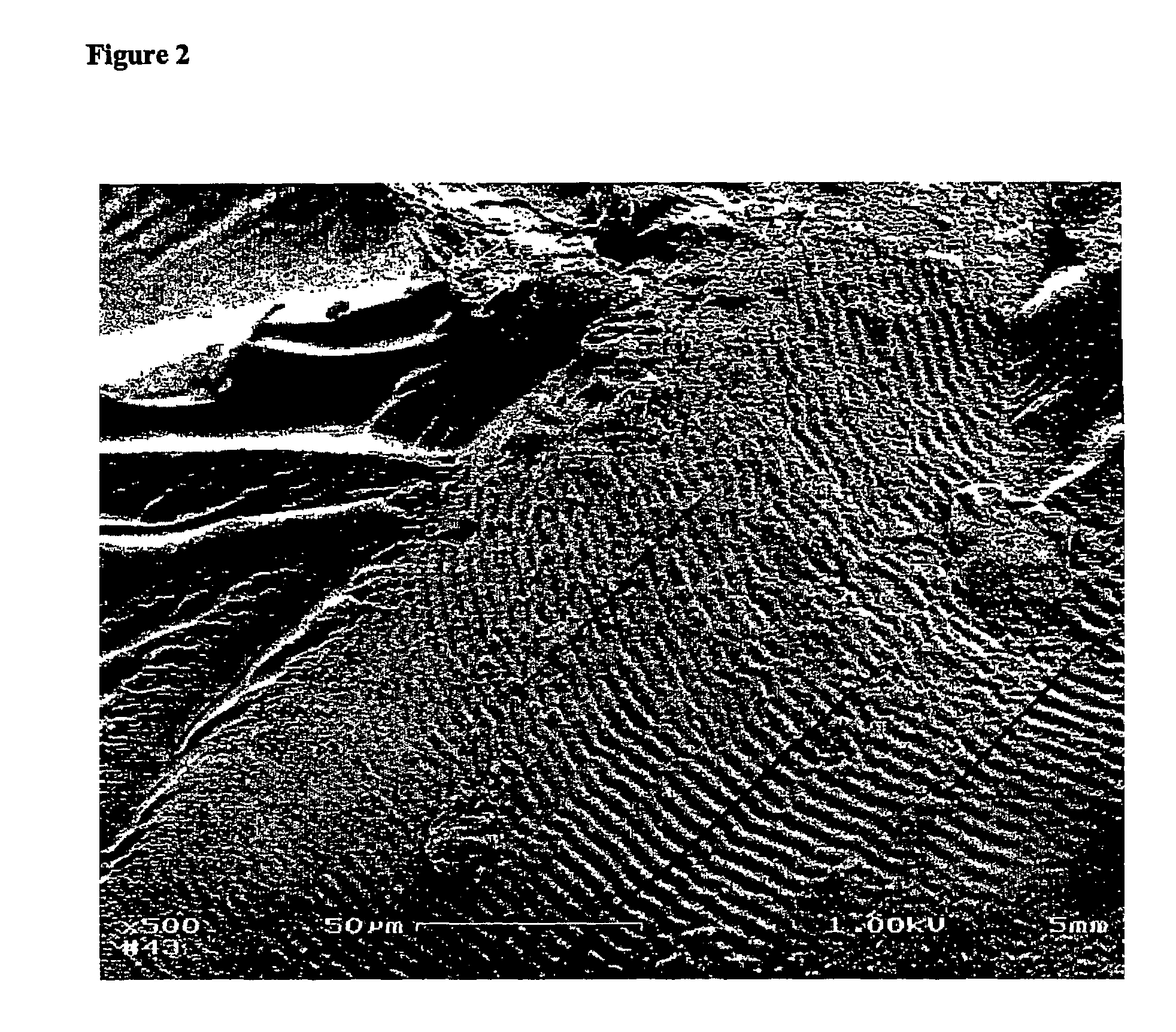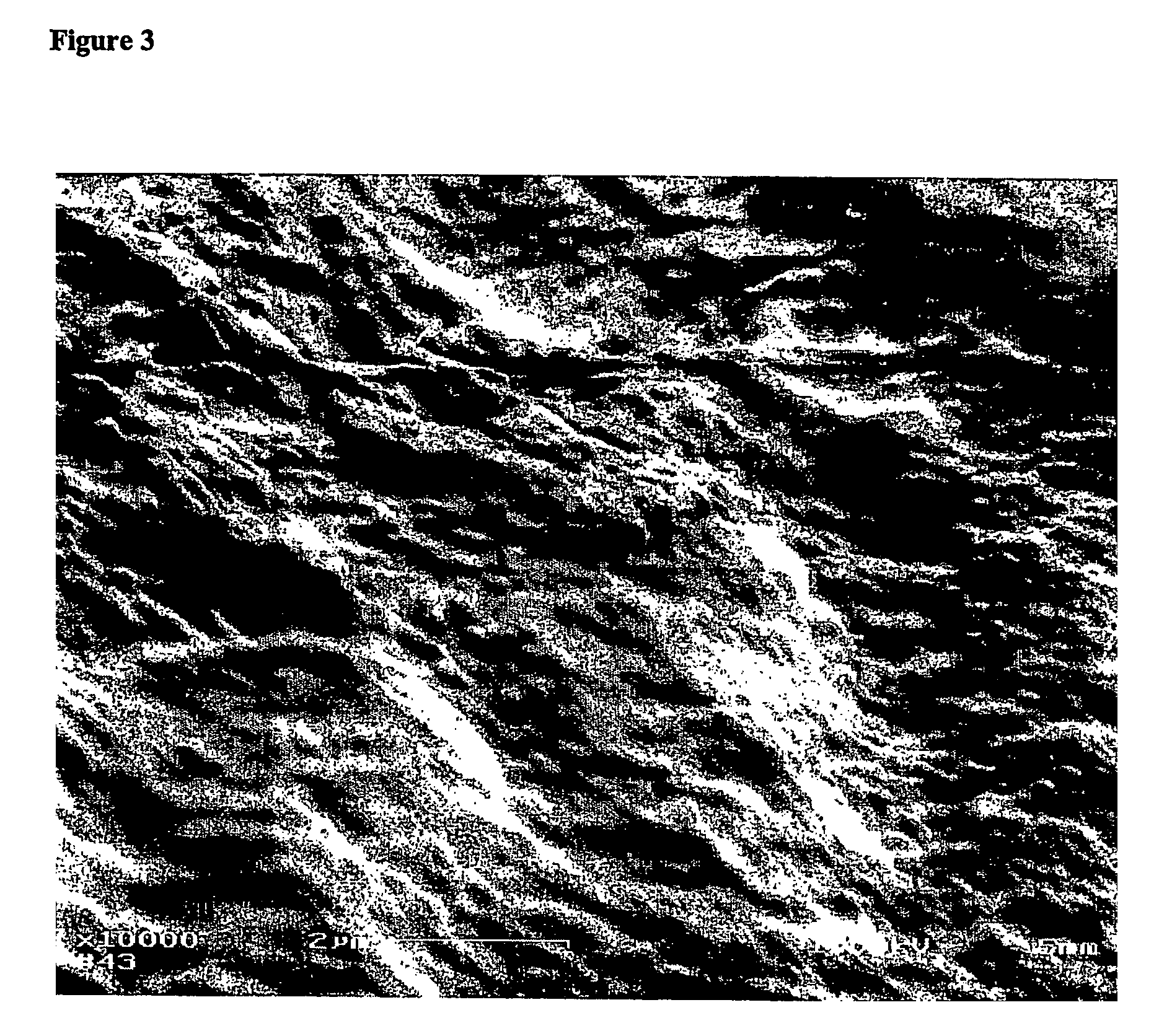Templated native silk smectic gels
a technology of smectic gel and native silk, which is applied in the direction of peptide/protein ingredients, peptide sources, instruments, etc., can solve the problem of few studies on the behavior of proteins at these interfaces to da
- Summary
- Abstract
- Description
- Claims
- Application Information
AI Technical Summary
Benefits of technology
Problems solved by technology
Method used
Image
Examples
example 1
Preparation of Silk
[0151]Materials—Cocoons of B. mori silkworm silk were kindly supplied by M Tsukada, Institute of Sericulture, Tsukuba, Japan. Chloroform, hexane and iso-amyl alcohol were purchased from Aldrich and Fisher Scientific and used without further purification. Tris(2,2′-bipyridyl)dichlororuthenium(II) hexahydrate (“Rubipy”) was purchased from Aldrich. Preparation of Regenerated B. mori Silk Fibroin Solutions—The silk fibroin solutions were prepared by either one of two methods: Method A—for preparation of bulk solids—B. mori silk fibroin solutions were prepared as follows. Cocoons were boiled for 30 min in an aqueous solution of 0.02 M Na2CO3, then rinsed thoroughly with water to extract the glue-like sericin proteins. The extracted silk was then dissolved in 9.3 M LiBr solution at room temperature yielding a 20 wt % / o solution. This solution was dialyzed in water using Slide-a-Lyzer dialysis cassettes (Pierce, MWCO 2000) for 48 hrs. The final concentration of aqueous s...
example 2
Preparation of Smectic Gels
[0152]Preparation of interfacial gels—Aqueous-chloroform, -hexane and -iso-amyl alcohol interfaces were prepared by adding silk peptide solution into glass vials containing each solvent. The vials were then capped to prevent evaporation and left at room temperature overnight. The resulting interfacial gels were collected and dried at room temperature overnight.
[0153]Desalted, HPLC purified, and lyophilized collagen-like peptide was obtained from the Protein Chemistry Core Facility at the Tufts Medical School. The sequence was (Glu)5(Gly-Val -Pro-Gly-Pro-Pro)6(Glu)5 (SEQ ID NO: 3). The glutamic acid blocks were added to the ends of the peptides to promote solubility in water so that contaminant salts would not complicate analysis. Similar peptide design strategies have been used by Rotwarf et. al. to examine the solution behavior of β-sheet forming peptides. Rotwarf, D. M.; Davenport, V. G.; Shi, P.-T.; Peng, J.-L.; Sheraga, H. A. Biopolymers 1996, 39, 531-...
example 3
Characterization
[0154]Characterization—Gels treated with ruthenium compound were cut to obtain cross sections. The amyl alcohol gel in Rubipy is shown in FIG. 16. The ruthenium compound (Rubipy) has an orange color, and is in the silk gel in a higher concentration (bright red orange) than in the surrounding solution (light yellow orange). Gels treated with Rubipy for 1 hour were sliced open to obtain cross sections (FIG. 17). These cross sections allow us to compare the structure of the gel with a lot of Rubipy absorbed to the structure of the interior, which has a lower concentration of Rubipy. A cross section is shown in FIG. 18, and a dark red-orange Rubipy-rich skin can be seen surrounding a clear yellowish silk core. Understanding and engineering the skin core morphology formed through the templating process is important for controlling the characteristics and function of the gels.
[0155]SEM—Images of dried gels were obtained with a LEO Gemini 982 Field Emission Gun SEM. Working...
PUM
| Property | Measurement | Unit |
|---|---|---|
| thick | aaaaa | aaaaa |
| thickness | aaaaa | aaaaa |
| thickness | aaaaa | aaaaa |
Abstract
Description
Claims
Application Information
 Login to View More
Login to View More - R&D
- Intellectual Property
- Life Sciences
- Materials
- Tech Scout
- Unparalleled Data Quality
- Higher Quality Content
- 60% Fewer Hallucinations
Browse by: Latest US Patents, China's latest patents, Technical Efficacy Thesaurus, Application Domain, Technology Topic, Popular Technical Reports.
© 2025 PatSnap. All rights reserved.Legal|Privacy policy|Modern Slavery Act Transparency Statement|Sitemap|About US| Contact US: help@patsnap.com



